[ad_1]
Invasive species provide a unusual investigate chance, as they often colonise new environments quite various to their indigenous habitat. 1 this kind of species is the Jackson’s three-horned chameleon (Triocerus j. xantholophus), which was accidentally launched to the Hawaiian Islands in the 1970s.
Our review, revealed nowadays in Science Advances, reveals Hawaiian chameleons screen significantly brighter social indicators than people from their native habitat vary in East Africa – and could represent an instance of immediate evolution.
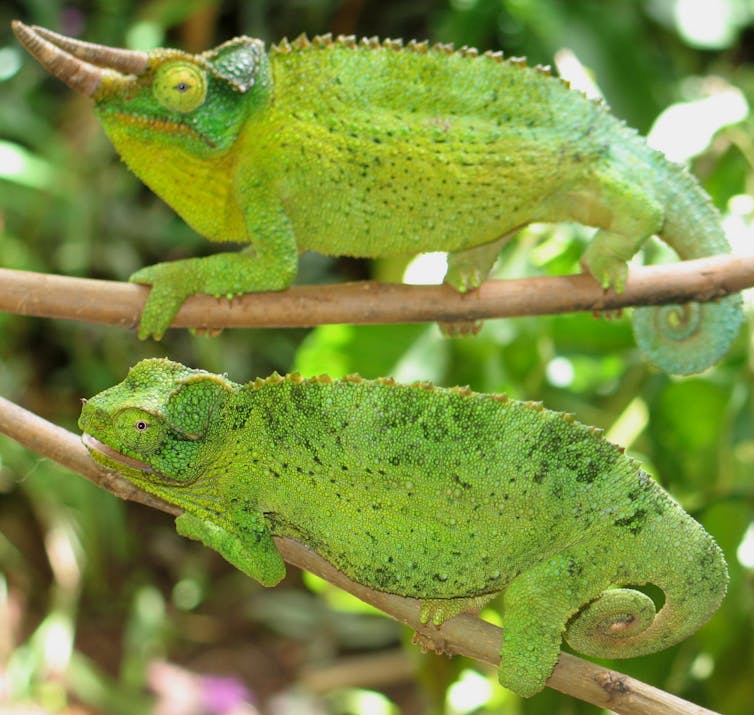
Martin Whiting.
A very long way from residence
In 1972, about 36 Jackson’s chameleons created their way from their indigenous Kenya to the Hawaiian island of Oahu, destined for the pet trade.
The chameleons have been a very little even worse for use by the time they arrived in Hawaii, subsequent a extended and taxing journey that would have begun times before they have been loaded on to the plane in Nairobi.

Wikimedia Commons
The story goes that an Oahu pet shop owner, Robin Ventura, opened the crate in his garden to give them fresh air and an chance to recuperate. Presumably, he underestimated the speed with which chameleons can go (and recuperate) – and they speedily dispersed into the surrounding location.
This founding inhabitants represented an accidental invasion, and subsequently turned an unplanned experiment in evolution. What occurs when an animal with colourful social displays – from a populace with a lot of hen and snake predators – is released to an island just about free of charge of predators?
Read through extra:
How do chameleons and other creatures change colour?
Evolution in motion?
We predicted Hawaiian chameleons, as a consequence of staying relatively free of charge from predation, would have extra elaborate or brighter shows than their Kenyan counterparts. We also predicted they would be additional conspicuous when seen by their East African predators, these types of as birds and snakes.
In the animal kingdom, vibrant or colourful shows can draw in the awareness of sharp-eyed predators. This decreases an specific animal’s chance of survival and, by extension, its reproductive health (or the amount of genes it passes on to long run generations).
When survival is threatened, all-natural choice acts as a brake and halts the further elaboration of color, or shifts brilliant colours to spots of the system considerably less noticeable to predators.
For instance, several lizard species have bright colors hid on their undersides or throats. In South Africa, male Augrabies flat lizards will signal to rival males by elevating their underside and exposing the throat, which is puffed out.
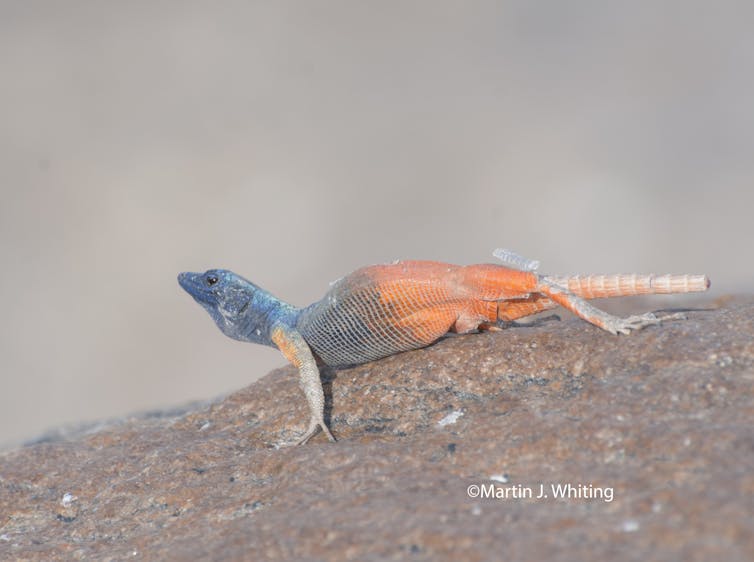
Martin Whiting
On the other hand, conspicuous shows could also enhance health and fitness. For instance, brighter or extra vibrant males could obtain increased obtain to girls, either by winning contests with rival males, or simply showing much more appealing to women.
This tug of war in between survival and health and fitness is effectively documented in species with mounted or seasonally dependent colouration. For occasion, guppies turn into significantly less vibrant when unsafe predators share their streams. Having said that, it is significantly less understood in animals with dynamic colour alter these kinds of as chameleons.
While we have a excellent knowing of how chameleons transform color, we don’t know if they modulate their displays when there are additional predators in their surroundings. It may perhaps also be that organic selection stops them from creating colour indicators that are vibrant or dazzling beyond a specified threshold.
To examination our predictions, we travelled to Kenya and Hawaii to review colour alter in wild chameleons.
https://www.youtube.com/observe?v=-G2WYnb265I
Lively check subjects
Chameleons are excellent examine topics mainly because they have a incredibly potent stimulus response. You can pop them on a branch away from their regular haunts and existing them with a bogus predator or one more chameleon, and they will commit all their consideration to the stimulus whilst fully ignoring you!
We offered each male chameleon with a rival male, a feminine, a model chook predator and a model snake predator – each in a a single-on-just one conversation. All through the displays we measured their color working with an optic spectrometer.
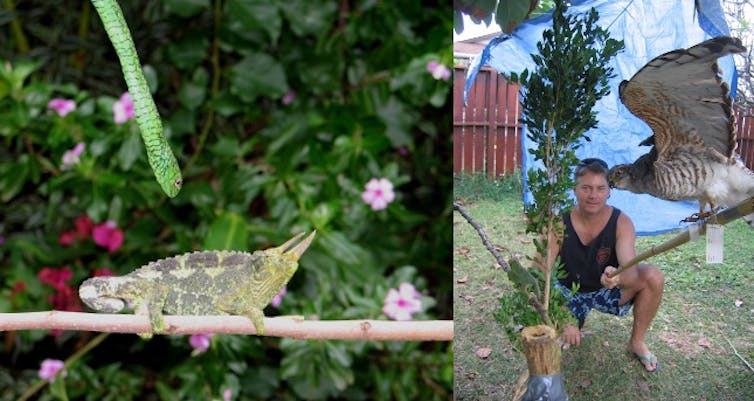
Martin Whiting
This instrument permits us to quantify two metrics of colour: chromatic distinction (fundamentally how vibrant they are) and luminance distinction (how bright they are). We could then estimate how detectable a displaying chameleon would be to an observer – be it one more chameleon, or a fowl or snake predator.
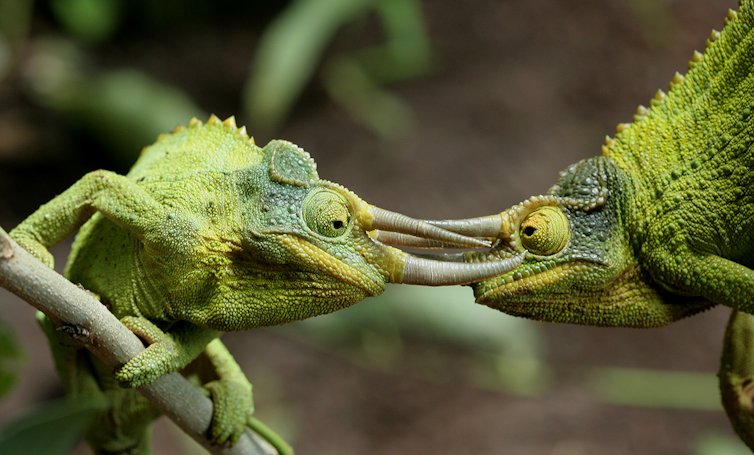
Devi Stuart-Fox
We also calculated the leafy vegetation that types the backdrop from which a chameleon signals. This way we could estimate how detectable a exhibiting chameleon would be against a unique track record.
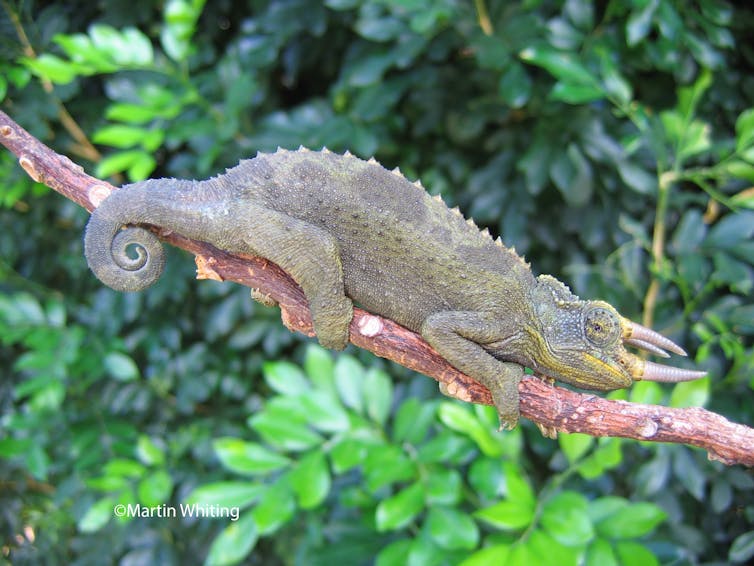
Martin Whiting
An thrilling instance of fast improve
The final results had been specifically fascinating and exceeded our expectations. We discovered Hawaiian chameleons experienced considerably brighter shows than Kenyan chameleons during male contests and when courting females. They have been also much more conspicuous against their Hawaiian qualifications than a Kenyan qualifications.
This is dependable with what researchers expression “local adaptation”. This is the concept that signals will be great-tuned to be far more detectable in the setting in which they are applied.
For Hawaiian chameleons, just one unintended consequence of remaining brighter was they ended up also more detectable to their native predators.
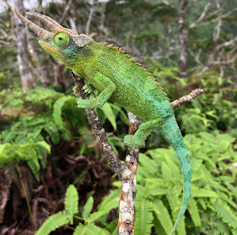
Brenden S. Holland, Creator offered
Interestingly, this impact was much more pronounced when facing birds in contrast to snakes – probably simply because snakes have poorer colour discrimination than birds. Lastly, Hawaiian chameleons also had a bigger capability to improve colour than Kenyan chameleons – they could do so more than a better selection.
We simply cannot be totally certain brighter alerts in Hawaiian chameleons represents swift evolution. It’s also feasible this diploma of color improve is because of to plasticity, which is when an animal changes to a distinctive point out due to prevailing environmental circumstances.
However, plasticity by itself can evolve – and colour change in chameleons may perhaps be a mixture of each evolutionary change and plasticity.

Martin Whiting
[ad_2]
Supply url





More Stories
Nature’s Fitness and Weight Loss Center – Water Workouts
Keep Your Heart Healthy Naturally With Cardio E-Z
A Guide To Cardio Training